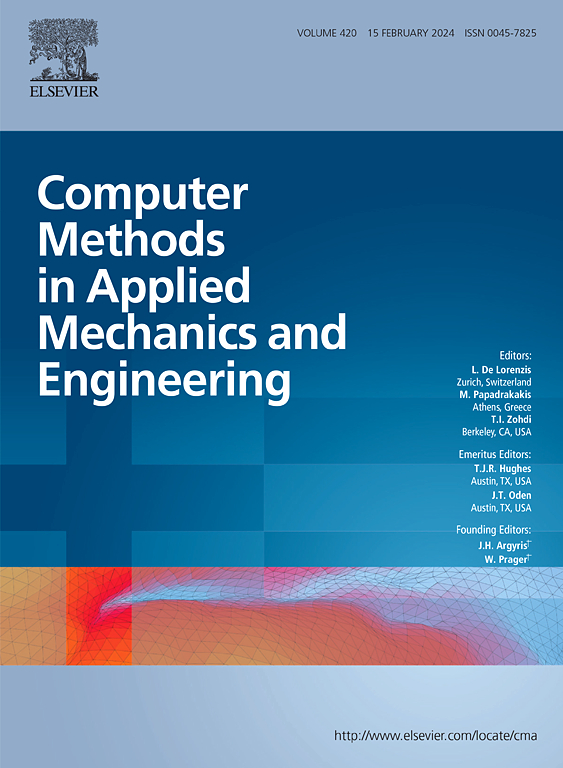材料逆表征的深度学习
IF 6.9
1区 工程技术
Q1 ENGINEERING, MULTIDISCIPLINARY
Computer Methods in Applied Mechanics and Engineering
Pub Date : 2025-01-01
DOI:10.1016/j.cma.2024.117650
引用次数: 0
摘要
本文提出了一种基于部分场响应测量的物理信息神经网络(pinn)计算高效的材料逆表征方法。pinn从响应场的测量部分重构系统响应的完整空间分布,并估计未知材料性质的空间分布。这种方法的主要计算开销是一次性生成pinn的潜在响应,从而产生显著的计算效率。此外,本研究利用pinn来训练基于微分方程描述的底层物理的模型,并量化由噪声数据引起的任意不确定性。我们展示了几个一维和二维的例子,其中弹性模量分布是基于静态部分场位移响应测量的特征。反演过程有效地提供了材料性质分布的准确估计,展示了pin - n在实际应用中的潜力。本文章由计算机程序翻译,如有差异,请以英文原文为准。
Deep learning for inverse material characterization
This paper presents an approach for computationally efficient inverse material characterization using Physics-Informed Neural Networks (PINNs) based on partial-field response measurements. PINNs reconstruct the full spatial distribution of the system’s response from the measured portion of the response field and estimate the spatial distribution of unknown material properties. The primary computational expense in this approach is the one-time generation of potential responses for the PINNs, resulting in significant computational efficiency. Furthermore, this study utilizes PINNs to train a model based on the underlying physics described by differential equations, and to quantify aleatoric uncertainty arising from noisy data. We demonstrate several one-dimensional and two-dimensional examples where the elastic modulus distribution is characterized based on static partial-field displacement response measurements. The inversion procedure efficiently provides accurate estimates of material property distributions, showcasing the potential of PINNs in practical applications.
求助全文
通过发布文献求助,成功后即可免费获取论文全文。
去求助
来源期刊
CiteScore
12.70
自引率
15.30%
发文量
719
审稿时长
44 days
期刊介绍:
Computer Methods in Applied Mechanics and Engineering stands as a cornerstone in the realm of computational science and engineering. With a history spanning over five decades, the journal has been a key platform for disseminating papers on advanced mathematical modeling and numerical solutions. Interdisciplinary in nature, these contributions encompass mechanics, mathematics, computer science, and various scientific disciplines. The journal welcomes a broad range of computational methods addressing the simulation, analysis, and design of complex physical problems, making it a vital resource for researchers in the field.

 求助内容:
求助内容: 应助结果提醒方式:
应助结果提醒方式:


